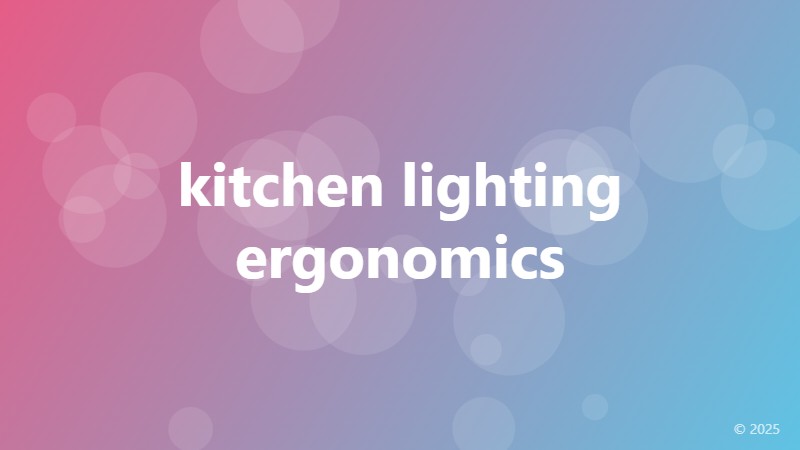kitchen lighting ergonomics

Why Kitchen Lighting Ergonomics Matters
Kitchen lighting ergonomics is often overlooked, yet it plays a crucial role in creating a comfortable and efficient cooking space. A well-designed kitchen lighting system can significantly improve visibility, reduce eye strain, and even prevent accidents. In this article, we'll delve into the importance of kitchen lighting ergonomics and provide tips on how to optimize your kitchen's lighting for maximum comfort and productivity.
The Impact of Poor Lighting on Kitchen Ergonomics
Poor lighting can lead to a range of issues, from headaches and eye fatigue to accidents and injuries. In the kitchen, inadequate lighting can make it difficult to read recipes, identify ingredients, and perform tasks that require precision. Moreover, poor lighting can exacerbate existing musculoskeletal disorders, such as carpal tunnel syndrome and tendonitis, by forcing cooks to adopt awkward postures and straining their eyes.
Designing an Ergonomic Kitchen Lighting System
To create an ergonomic kitchen lighting system, it's essential to consider the following factors:
- Task lighting: Focus on providing sufficient lighting for specific tasks, such as food preparation, cooking, and cleaning. Under-cabinet lighting, pendant lights, and recessed lighting can be effective task lighting solutions.
- Ambient lighting: Create a comfortable and inviting atmosphere with ambient lighting, such as ceiling-mounted fixtures or LED strips. This type of lighting helps to reduce eye strain and provides overall illumination.
- Accent lighting: Accent lighting highlights specific design features or creates visual interest. This type of lighting can be used to draw attention to kitchen islands, display cabinets, or architectural details.
Optimizing Kitchen Lighting for Ergonomics
Here are some practical tips to optimize your kitchen lighting for ergonomics:
- Layered lighting: Use a combination of task, ambient, and accent lighting to create a layered lighting effect that provides adequate illumination for different tasks and activities.
- Adjustable lighting: Install lighting fixtures that can be adjusted to different heights, angles, or intensities to accommodate different tasks and users.
- Energy-efficient options: Choose energy-efficient lighting options, such as LED or compact fluorescent lamps (CFLs), which can help reduce eye strain and energy consumption.
Conclusion
Kitchen lighting ergonomics is a critical aspect of creating a comfortable, efficient, and safe cooking space. By understanding the importance of ergonomic lighting and applying the design principles and tips outlined in this article, you can optimize your kitchen lighting to reduce eye strain, prevent accidents, and enhance overall cooking experience.